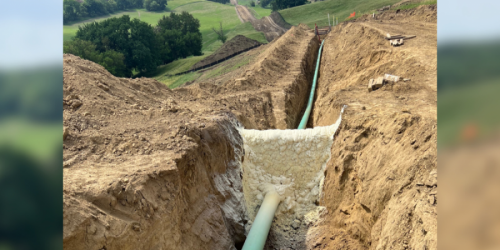Q&A Forums
Foam boards Post New Topic | Post Reply
| Author | Comments |
|---|---|
|
Grady Littlehale
Posted: Aug 17, 2008 12:49 PM
|
Foam boards
Mason,Would the foam sheets you buy at the hardware store need to be covered by a thermal/ignition barrier too? |
|
mason
Posted: Aug 18, 2008 07:54 AM
|
Yes, Any foam plastic requires a thermal barrier for the inhabited areas of a building and an ignition barrier in attics and crawl spaces, unless the assembly has been tested in accordance with full scale room corner fire tests that demonstrate the material, design or assembly is safe to use compared to code approved assemblies or pass/fail criteria established for the tests. These fire tests as detailed in the ICC code include: ASTM E 119, UL 1715, UL 1050, NFPA 286, FM 4880, UBC 26-3. Hope this helps. |
|
Jim Coler
Posted: Aug 21, 2008 10:01 PM
|
Mason, This is a burr under my saddle. The code specifically states any material which is class I-A fire rated to ASTM E-84, can be left exposed. The it goes on to state - "All plasticized foams need to be covered...". This is like saying all cars drive and perform the same. Why don't they specify the different types of plasticized foams - thermoset and thermoplastic foams? They perform extremely differently under fire conditions and really should not be lumped together as the same approvals/disapprovals testing. Thermoform plastics will drip and melt and typically will sustain their own combustion which prevents them from being class I-A fire rated. Yes, there are some special thermoform plastics which meet the ASTM E-84 testing and are approved in enclosures like telecom equipment and computers and such, but these are specially formulated. Thermoset plastics cannot be melted and will only combust when exposed to elevated temperatures. There have been many foam formulations which meet the ASTM E-84 Class I-A standard, but they are only disqualified by the all encompassing statement of "All Foams need to be covered..." This doesn't make any common sense! Can you shed some light on this from a practical standpoint? |
|
mason
Posted: Aug 24, 2008 09:42 AM
|
You are reading the codes incorrectly. IRC Section 314 Foam Plastic: "Unless otherwise allowed in Section R 314.5 or Section 314.6 foam plastic shall be separated from the interior of a building by an approved thermal barrier." Exceptions are listed for roofing, masonary coverings of 1 inch or more, attics and crawl spaces(ignition barriers required) The codes do not say that foam insulation can be left exposed if it passes ASTM E -84. In order to leave foam plastics exposed the codes require specific approval as detailed in Section R 314.6 Specific approval: " Foam plastic not meeting the requirements of Sections R 314.3 through R 314.5 shall be specifically approved on the basis of one of the following approved tests, NFPA 286 with the acceptance criteria of SEction R 315.4, FM 4880, UL 1040, or UL 1715 or fire tests related to the actual end-use configurations. Note: ASTM E 84 has been specifically addressed as a fire test that does not predict fire performance of foam plastic sufficient to be considered a test by itself to qualify foam plastics without a thermal barrier or ignition barrier. These rules apply to all foam plastics not just sprayfoam. For more information go to sprayfoam.org and download the thermal barrier paper AY 126. |
|
mason
Posted: Aug 24, 2008 09:53 AM
|
To be more specific the danger in thermoset foam plastics such as sprayfoam or polyiso boards is that these foams can flash at a low temperature. The speed at which the surface area catches on fire and produces smoke and heat makes it a severe fire hazard if not covered with an suitable thermal barrier or ignition barrier in the case of attics. Once covered the foam does not flash is a relatively safe building material during a fire. |





























